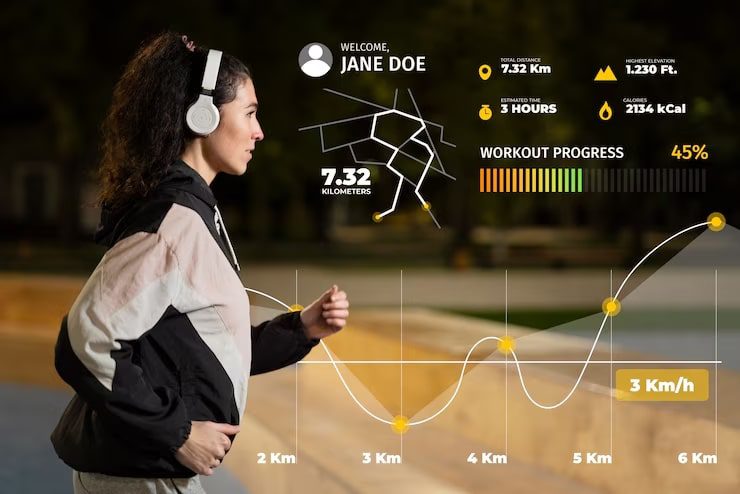The world of sports has evolved tremendously over the years, and a significant part of this transformation is driven by advancements in sports technology. From wearable devices to AI-driven analytics, sports technology has revolutionized how athletes train, compete, and recover. In this blog, we’ll explore the profound impact of sports technology on performance, shedding light on how it has become a game-changer for athletes across the globe.
The Rise of Sports Technology
Sports technology refers to the use of advanced tools and devices designed to enhance athletic performance. Whether it’s tracking an athlete’s heart rate during a marathon or analyzing a football player’s sprinting technique, technology has become an integral part of sports training and competition.
Enhancing Training with Wearable Devices
Wearable devices have taken the sports world by storm. These compact gadgets can monitor various aspects of an athlete’s performance, such as heart rate, speed, distance covered, and even sleep patterns. According to a report by Grand View Research, the global wearable tech market is expected to reach $62.82 billion by 2025 .
Athletes and coaches use data collected from these devices to optimize training routines. For example, a marathon runner can track their pace and adjust their training to improve stamina. Similarly, a swimmer can monitor their stroke rate and make necessary corrections to enhance efficiency.
| Wearable Device | Key Features | Benefits for Athletes |
| Smartwatches | Heart rate monitoring, GPS tracking | Track progress, optimize performance |
| Fitness Bands | Sleep tracking, step counting | Improve recovery, maintain fitness |
| Chest Straps | Accurate heart rate monitoring | Enhance cardiovascular training |
Data Analytics: Turning Insights into Action
Data analytics is another crucial component of sports technology. By analyzing vast amounts of data, coaches and athletes can gain insights that were previously unattainable. For instance, AI-driven platforms can analyze game footage and provide detailed reports on an athlete’s performance.
A study by McKinsey & Company found that data-driven decision-making can improve a team’s performance by 5-10% . This advantage can be the difference between winning and losing in competitive sports. For instance, football teams can leverage data analytics to study their opponents’ strategies and fine-tune their game plans based on insights.
Injury Prevention and Recovery
Sports technology is not just about enhancing performance; it’s also about preventing injuries and speeding up recovery. Advanced tools like motion sensors and biomechanics software can detect irregularities in an athlete’s movement, allowing for early intervention and reducing the risk of injury.
Moreover, recovery tools like cryotherapy chambers and compression gear have become increasingly popular among athletes. According to a study published in the Journal of Athletic Training, using compression garments can reduce muscle soreness by up to 20%.
| Technology | Purpose | Impact on Athletes |
| Motion Sensors | Detect movement patterns | Prevent injuries, improve technique |
| Cryotherapy | Speed up recovery | Reduce inflammation, boost recovery time |
| Biomechanics Software | Analyze movements | Correct form, enhance performance |
Virtual Reality: The Future of Training
Virtual Reality (VR) is emerging as a groundbreaking tool in sports training. Athletes can now simulate real-game scenarios and practice their skills in a controlled environment. For example, a quarterback in American football can use VR to practice throwing passes without the physical toll of an actual game.
VR also helps in mental training. Athletes can visualize their performance and mentally prepare for competitions. This technology is particularly beneficial for sports like golf and basketball, where focus and precision are key.
The Role of AI in Sports Technology
Artificial intelligence (AI) has made significant inroads into the world of sports. AI-driven platforms can analyze vast amounts of data in real-time, providing coaches and athletes with actionable insights. For example, AI can analyze an athlete’s performance during a game and suggest immediate adjustments to improve results.
According to PwC, AI could contribute up to $15.7 trillion to the global economy by 2030 , and the sports industry is no exception. AI-powered tools are being used to predict injury risks, optimize training regimens, and even scout new talent.
Conclusion
Sports technology is undoubtedly transforming the landscape of athletics. From wearable devices that track performance to AI-driven analytics that provide actionable insights, technology is helping athletes reach new heights. As we look to the future, the integration of cutting-edge sports technology will continue to push the boundaries of what’s possible in sports.
For athletes, embracing sports technology isn’t just an option—it’s a necessity. By leveraging the power of technology, they can optimize their training, reduce injury risks, and ultimately, achieve peak performance. The game has changed, and those who adapt will thrive in this new era of sports.







